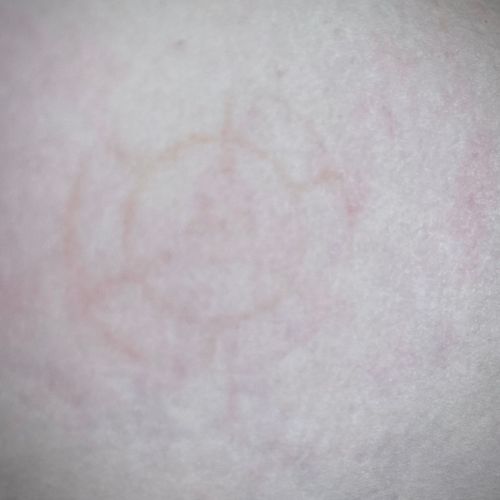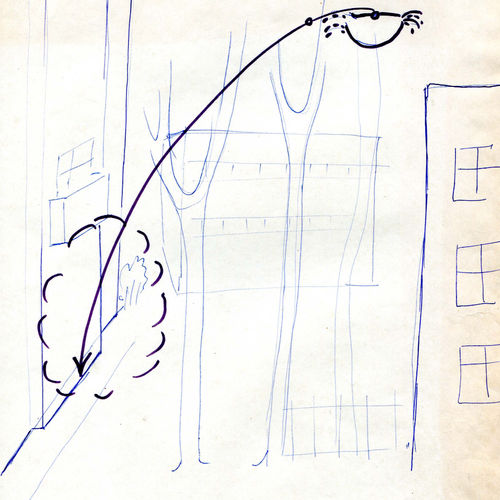| ID | #1598173213 |
| Added | Sun, 23/08/2020 |
| Author | July N. |
| Sources | |
| Phenomena | |
| Status | Result
|
| Resume |
Initial data
The crash of the XS894, piloted by American Captain William Schaffner on the evening of September 1970, was officially documented as a tragic accident.
But reports of strange flying transparent spheres, unusual flashes on the radar and the fact that the plane was detected with an empty cockpit left the story open to debate.
On the night of September 8, 1970, Captain William Schaffner, an American pilot based in the Royal Air Force of Binbrook, took off from the flight path to the skies over Grimsby and headed through the Humber and over the North Sea to Flamborough. Shortly after 10:30 p.m., his plane crashed into the North Sea, five miles south of Cape Flamborough.
A search-and-rescue operation was launched from the air and at sea, but it took another four days for the joint US-UK operation to stop the search.
The story has sparked much debate and attracted the attention of conspiracy theorists.
On 7 October 1970, it was revealed that the aircraft had been found when Navy divers sailed to Flamborough aboard HMS Kedleston, but their search still yielded no answers and they returned empty-handed.
Captain William Schaffner's body was still missing and the plane remained at the bottom of the sea.
It took until December 1970 to bring the sunken plane to the surface, but, to everyone's surprise, the lantern above the cockpit was closed and empty.
The American pilot disappeared, and rumors immediately began to spread.
On Thursday, October 8, 1992, the story resurfaced with a new perspective on the incident, which has now been described as the "Foxtrot 94 Mystery" when the Grimsby Telegraph began publishing a series of articles.
Unnamed military sources were quoted as saying they had seen unidentified objects in Grimsby, Clitherords, Scunthorpe, Hull, Humber, all along the coast to Flamborough and beyond.
There were also reports that an unidentified ship surrounded a fleet of phantom aircraft and that a cat-and-mouse chase led to the death of Captain William Schaffner.
Other eyewitnesses told their stories, including a team from the Royal Beanbrook Air Force, who said it was their job to investigate the crash, but claimed they had stopped and that various tools had disappeared.
One of two audio recordings made that night showed that the pilot had described the strange vessel.
It seemed that the case would remain a mystery, but there were several things that changed the course of history.
In 2002, Captain William Schaffner's sons Mike and Glenn attempted to review official files.
Eventually the files were declassified and they showed that the incident was an unfortunate accident with a plausible explanation, down to the assumption that the cockpit lantern was closed because the hydraulic fluid shrinks when it gets cold, as it would be at the bottom in the North Sea.
Another breakthrough in this case occurred in recent years, when the National Archives declassified hundreds of files containing thousands of pages. Between them there are several interesting files, including Defe-24-2039-1-1 and Defe-24-2027-1-1, both of which contain numerous pages about the incident.
These files, stored in the UFO files of the National Archives, appear to show that the incident was a tragic accident that claimed the life of Captain William Schaffner.
Original news
September 1970 - Fatal crash sparks strange theories
The downing of fighter jet XS894, piloted by American Captain William Shaffner on a September evening in 1970, has been officially documented as a tragic accident.
But reports of bizarre flying transparent spheres, unusual blips on the radar and the fact the aircraft was discovered with its cockpit empty and canopy shut fast has left the story open to discussion.
On the night of September 8 1970, Captain William Schaffner, an American pilot based at RAF Binbrook took off from the flight-line out into the skies over Grimsby and headed across the Humber, and out over the North Sea, heading to Flamborough. Shortly after 10.30pm his plane ditched into the North Sea, five miles south of Flamborough Head.
An air and sea search and rescue operation was launched but it would take a further four days for the joint American and British operation to cease their search.
On October 7, 1970, it was revealed that the plane had been found when navy divers sailed to Flamborough onboard the HMS Kedleston but their search still did not provide answers and they returned empty handed.
The body of Captain William Schaffner was still missing and the plane remained on the sea bed.
It would take until December 1970 for the submerged plane to be brought to the surface but to everyone’s surprise the canopy over the cockpit was closed and it was empty.
The American pilot had vanished and immediately rumours began to circulate.
On Thursday, October 8, 1992, the story resurfaced with a new look at the incident, which was now being described as The Riddle of Foxtrot 94, when the Grimsby Telegraph began publishing a series of articles.
Unnamed military sources were cited, claiming they had seen unidentified objects across Grimsby, Cleethorpes, Scunthorpe, Hull, the Humber, all the way up the coast to Flamborough and beyond.
There were also reports the unidentified craft had surrounded a fleet of Phantom jets and that a cat and mouse chase resulted in the death of Captain William Schaffner.
Other eyewitnesses told their stories, including a team at RAF Binbrook who said it was their job to investigate the crash but claimed they were stalled and that various instruments had vanished.
One of two audio transcriptions taken from that night revealed the pilot had described these strange craft.
It seemed like the case would remain a mystery but several things happened that would change the course of the story.
In 2002, Captain William Schaffner’s sons, Mike and Glenn, launched an attempt to see the official files.
Eventually the files were declassified and they showed that the incident was an unfortunate accident with a plausible explanation, even going so far as to suggest that the cockpit canopy was closed because the hydraulic fluid compresses when it gets cold, as it would on the floor of the North Sea.
Another breakthrough in the case followed in recent years when the National Archives declassified hundreds of files containing thousands of pages. Across these are a number of interesting files, including Defe-24-2039-1-1 and Defe-24-2027-1-1, both of which contain numerous pages on the incident.
These files, whilst held in the National Archives UFO files, appear to show that the incident was a tragic accident which claimed the life of Captain William Schaffner.
Hypotheses
Accident

This version include any unexpected event or unexpected confluence of circumstances (in this case, not necessarily with a deadly or traumatic outcome, not necessarily directly influencing a person's or animal), as well as its consequences, which were taken as something mystical or paranormal.
Usually (e.g. in the Labour code) in an accident include:
Events
Rocket launches (from space.skyrocket.de)
- Site: Plesetsk (NIIP-53, GIK-1, GNIIP) (USSR / Russia) Vehicle: Voskhod Payload: Kosmos 361 (Zenit-4M #6, Rotor #6)
Investigation
Resume
Accident

This version include any unexpected event or unexpected confluence of circumstances (in this case, not necessarily with a deadly or traumatic outcome, not necessarily directly influencing a person's or animal), as well as its consequences, which were taken as something mystical or paranormal.
Usually (e.g. in the Labour code) in an accident include:
Similar facts
Log in or register to post comments


